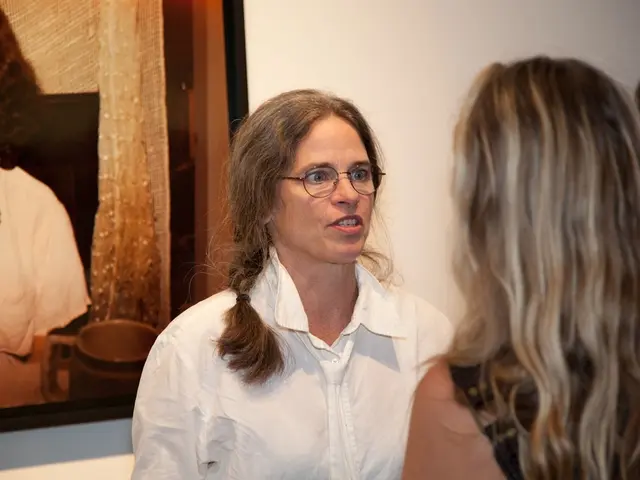Job trajectory potentially steeply declining post-45 for you
In the later stages of one's career, making a change or seeking advancement can seem daunting. However, career coach Gesa Weinand encourages those in their mid-40s and 50s to approach this transition with confidence.
Weinand, who specialises in career development, notes that both men and women often find themselves re-evaluating their professional paths during this period, whether they refer to it as a midlife or midjob crisis. For women, this often follows an intense family phase, she says.
When applying for a new role or seeking advancement, Weinand advises highlighting one's experience and successes. This is crucial, she explains, as employers are typically looking for candidates who can bring a wealth of knowledge and proven results to the table.
To increase one's chances of success, Weinand suggests spending a significant amount of time understanding the requirements of the position and carefully considering how one's own qualifications align. She also recommends adopting a 'you're looking for, I'm offering' mindset, which involves clearly demonstrating how one's skills and experience meet the needs of the role.
The most common industries for successful career changes or advancements among those aged 45 to 55, according to Weinand, include healthcare, education, IT, and consulting. This is not to say that opportunities are limited to these sectors, but rather that these industries have shown a propensity for welcoming and supporting mid-career professionals.
Weinand also encourages considering opportunities within one's current company. This could mean taking on more responsibility, pursuing a promotion, or even starting a new project. By doing so, one can leverage existing relationships and demonstrate a commitment to growth and development.
Despite common misconceptions, Weinhard states that the chances of changing careers or advancing in a job after turning 45 are not diminishing rapidly. This is good news for those seeking to make a change, as it indicates that age should not be a barrier to professional growth.
In conclusion, Weinhard's advice is simple yet effective: emphasise your experience, understand the role you're applying for, and present yourself as a solution to the employer's needs. With a proactive and strategic approach, a successful mid-career transition is within reach.
Read also:
- Recommendations propose stricter controls on MMRV immunizations, as suggested by Kennedy's advisory group
- Trump's impact on Americans to be explored in new podcas to be hosted by Alex Wagner, in partnership with Crooked Media
- Trials in Quebec mirroring the strains, aspirations, and divisions of the present era
- Mourning a Mother's Death: Strategies for Daughters to Find Comfort




